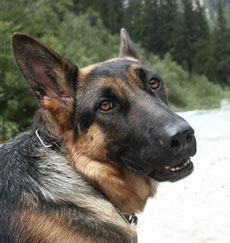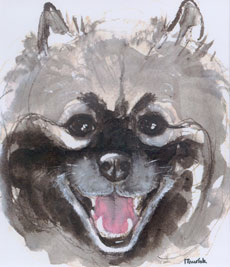|
Dogs today come in all shapes and sizes, but scientists believe they evolved from just a handful of wolves tamed by humans living in or near China less than 15,000 years ago.
Three research teams have attempted to solve some long-standing puzzles in the evolution and social history of dogs.
Their findings, reported in the journal Science, point to the existence of probably three founding females - the so-called "Eves" of the dog world.
They conclude that intensive breeding by humans over the last 500 years - not different genetic origins - is responsible for the dramatic differences in appearance among modern dogs.
One team studied Old World dogs to try to pin down their origins, previously thought to be in the Middle East.
The other team studied dogs of the New World and found they are not New World dogs at all, but also have their origins in East Asia.
Carles Vila, of Uppsala University, Sweden, one of the team studying the New World dogs, told BBC News Online: "We found that dogs originating in the Old World arrived to the New World with immigrating humans.
"Thus, even before the development of trade as we know it now, humans had to be exchanging dogs."
He added that exactly how or why humans domesticated dogs was not known, but the speed at which they seem to have multiplied and diversified indicates they played an important role in human life.
"I can imagine that if dogs were, for example, improving the quality of hunting, that would be a very great advantage for humans. It could even have made the colonisation of the New World easier.
"There must have been something advantageous about those dogs that made them extremely successful and allowed them to spread all over the world."
Peter Savolainen, of the Royal Institute of Technology, Stockholm, led the study of Old World dogs, analysing DNA samples taken from dogs in Asia, Europe, Africa and arctic America.
Surprise!
His team found that, though most dogs shared a common gene pool, genetic diversity was highest in East Asia, suggesting that dogs have been domesticated there the longest.
"Most earlier guesses have focused on the Middle East as the place of origin for dogs, based on the few known facts - a small amount of archaeological evidence from the region, and the fact that several other animals were domesticated there," he says.
The researchers studied gene sequences from the dogs' mitochondrial DNA, which is inherited directly from the mother. The findings indicated that the major present-day dog populations at some point had a common origin from a single gene pool.
Matthew Binns, head of genetics at the Animal Health Trust in Newmarket, UK, said the findings were significant: "For the first time, there's relatively convincing evidence actually pinpointing the date at which the dog was domesticated and also the location of that domestication, which is a bit of a surprise.
"People have previously thought that a lot of species were domesticated in the Middle East and this data clearly shows domestication took place in East Asia."
He added: "It looks as if 95% of current dogs come from just three original founding females and I guess these are the Eves of the dog world."
|












